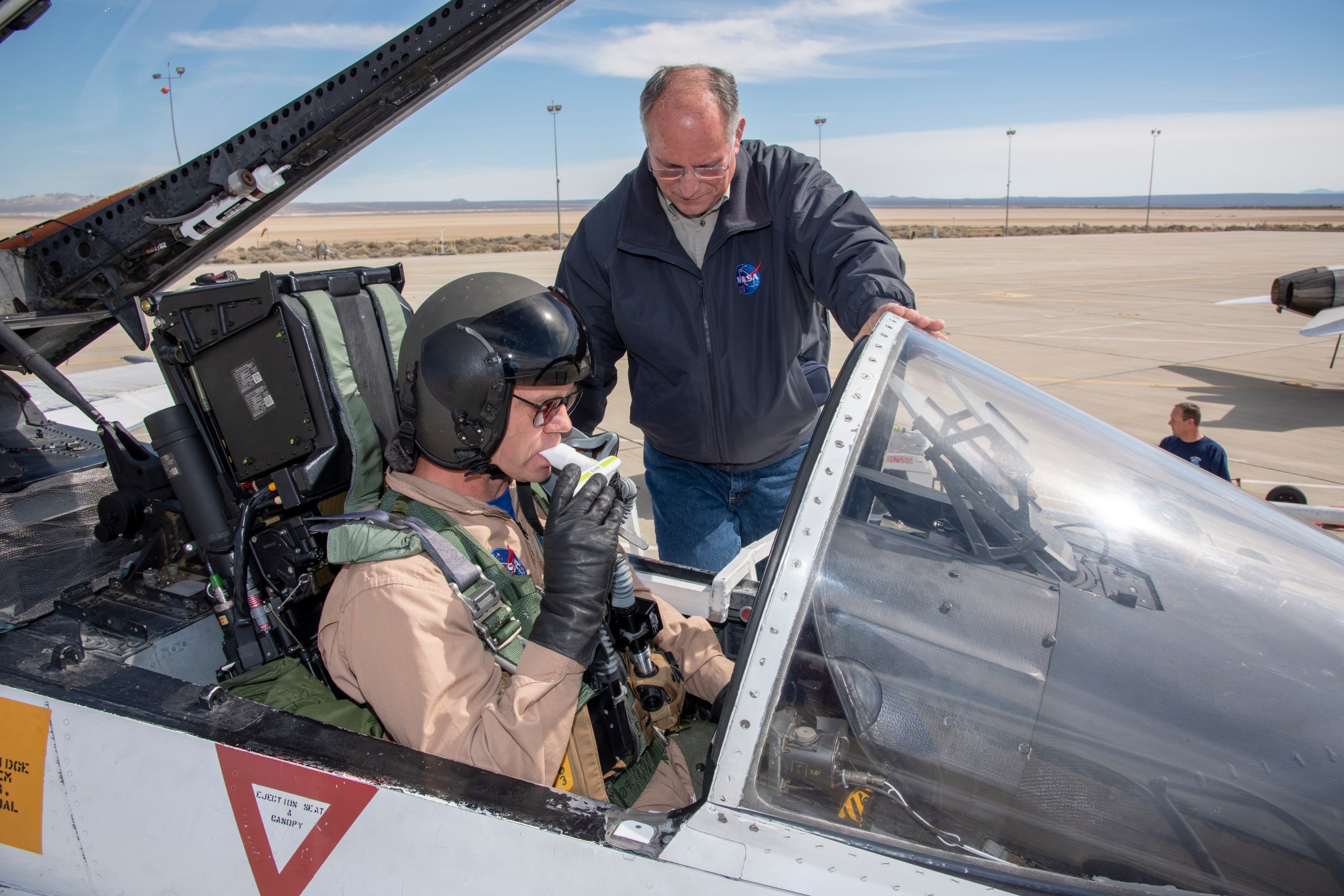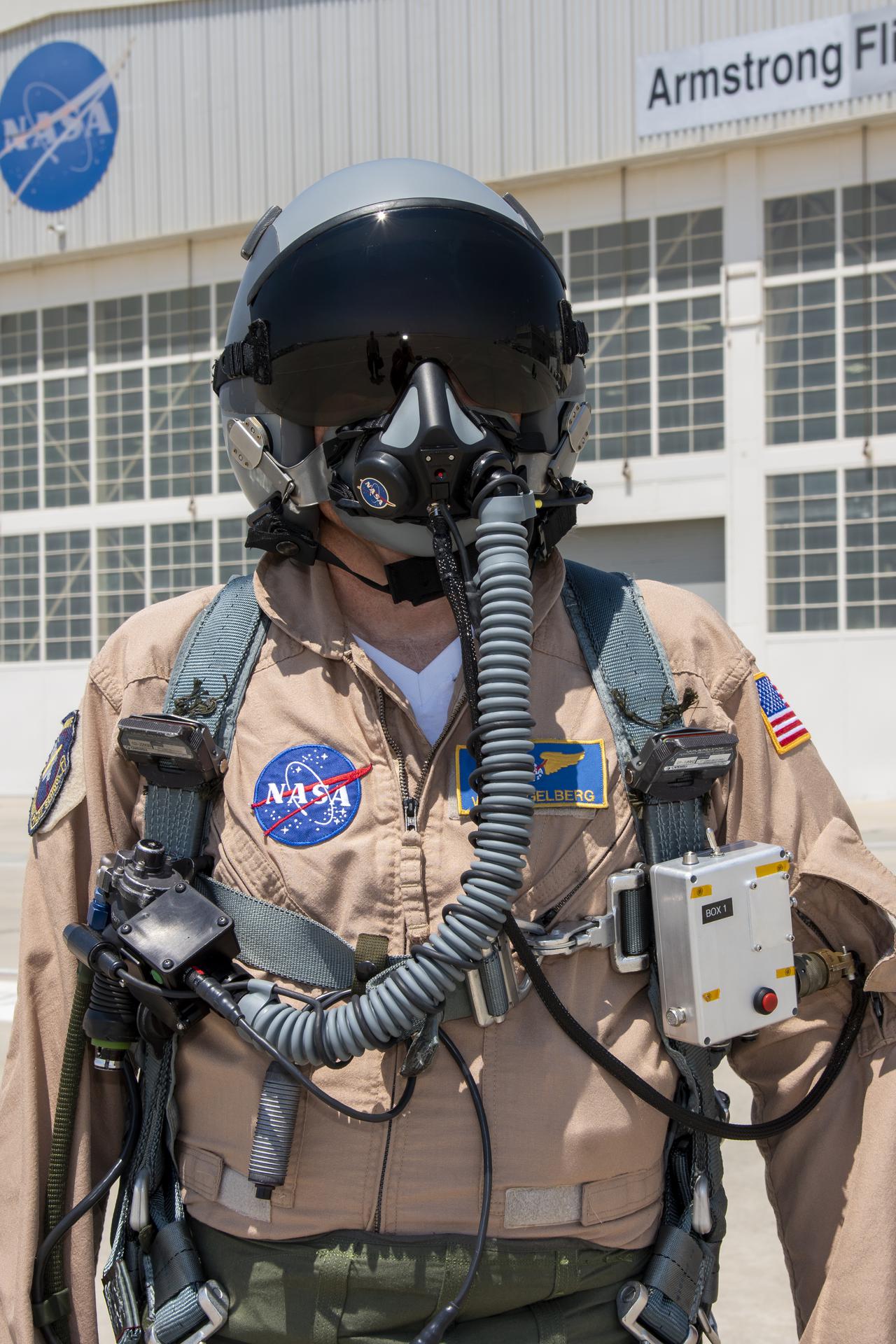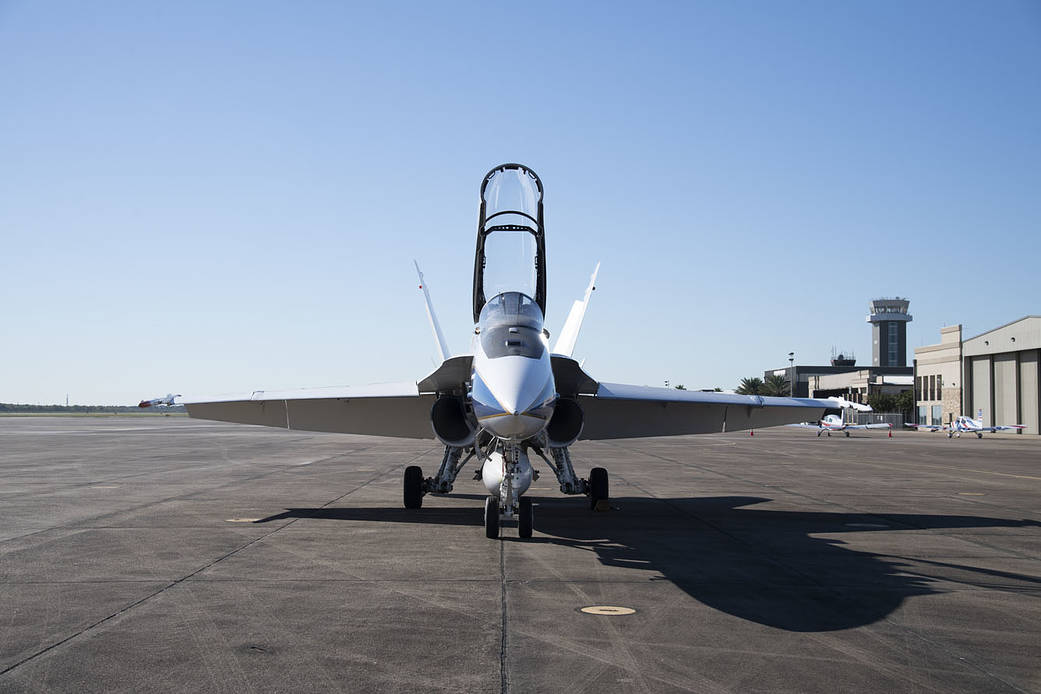
When NASA’s supersonic X-59 aircraft takes to the skies over the Armstrong Flight Research Center, it will be accompanied by two of NASA’s fastest research and support aircraft, both F-15s. In each of their cockpits, a pilot and a technician will be able to breathe easier thanks to life support upgrades.
As an aircraft gains altitude, the atmospheric pressure around it decreases, and oxygen molecules spread out – meaning a pilot gets less oxygen with each breath. This can lead to hypoxia, a deficiency of oxygen reaching the brain and other tissues of the body. Pilots have to train to recognize the symptoms, which can include headache, lightheadedness, dizziness, tunnel vision, even loss of consciousness.
Passenger planes – even supersonic ones – address this by keeping their cabins pressurized. They have systems that pump air into their cabins and adjust those levels depending on their altitudes.
Jets like the F-15s, which were designed as fighters, work differently. Their cabins are pressurized to maintain a lower cabin altitude when flying at high altitudes. In the event of a cabin pressurization issue resulting in cabin altitudes above 40,000 feet, pilots need to use masks that employ “positive pressure breathing,” a system that helps push oxygen into their lungs, according to Brian Griffin, deputy operations lead for NASA’s Low Boom Flight Demonstrator Project.
“Pretend you’re breathing through an inflated balloon,” Griffin said. “If you don’t control it, the air in the balloon will rush back into your lungs. And to exhale you have to push harder than the balloon is pushing back at you.”
Ben Cacanindin, X-59 aircraft operations engineer, puts it a bit more colorfully: “It’s like sucking on a leaf blower.”
The F-15s’ legacy systems used some positive pressure breathing, but not enough. That’s why NASA is switching to a system developed for the F-22 fighter jet, which does provide the extra positive pressure, he said. The new life support system includes an emergency oxygen bottle geared for higher altitudes, common on Air Force F-16s and A-10 aircraft, but new to NASA Armstrong’s F-15s. The emergency air supply attaches to the ejection seats.
To accommodate the new emergency oxygen bottles and regulators, NASA Armstrong crews had to do quite a bit of work.
For example, NASA Armstrong’s Aero-Mechanical Design Group designed the new mounts for the emergency oxygen bottles, and the Aerostructures Branch validated the mounts’ structural airworthiness. The crews also built a jig to help create the new clamps for the bottles.
“The parts that have gone into it we’ve custom designed in-house,” Cacanindin said
The new life support systems share many components with the X-59’s, Griffin said. Flight crews will wear the same gear, the panel-mounted regulator will be the same, and so will the device that reduces the pressure flow from the liquid oxygen tanks to the regulator.
After the modifications to the two F-15s are finished, the new life support systems will go through ground tests and then flight testing.
The X-59, as an experimental aircraft, is designed to fly at an altitude much higher than today’s typical commercial transport aircraft – but one that’s typical, and safe, for supersonic passenger aircraft designs. This could provide future supersonic commercial aircraft with their own “highway” in the sky. And while NASA’s testing this capability, the X-59 will have two well outfitted chaperones.
































